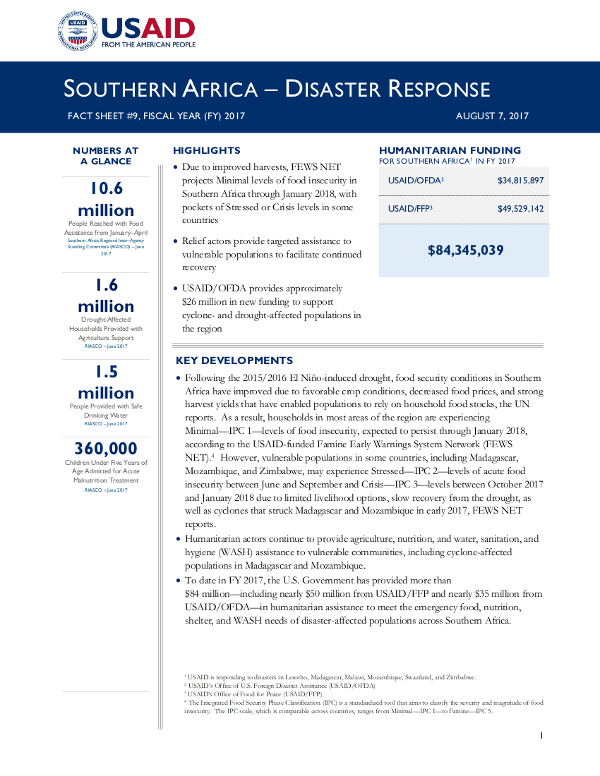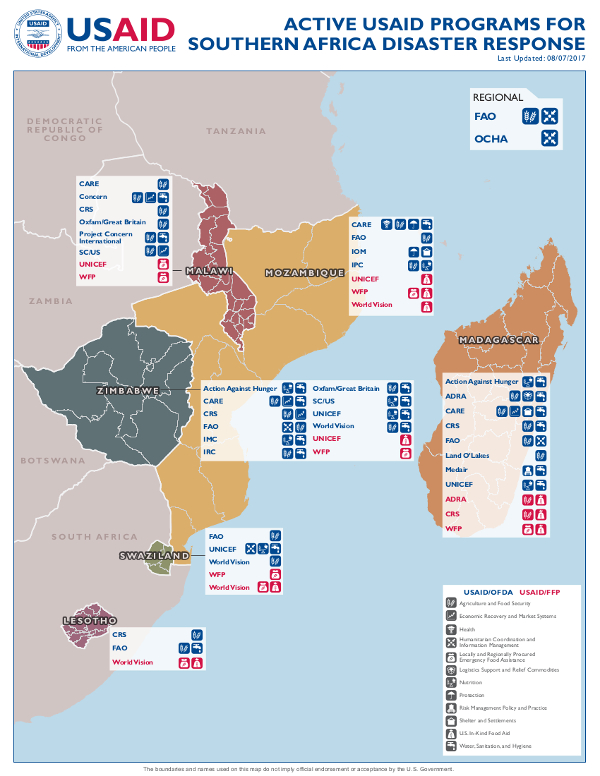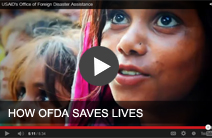- What We Do
- Agriculture and Food Security
- Democracy, Human Rights and Governance
- Economic Growth and Trade
- Education
- Ending Extreme Poverty
- Environment and Global Climate Change
- Gender Equality and Women's Empowerment
- Global Health
- Water and Sanitation
- Working in Crises and Conflict
- Disaster Assistance
- Political Transition Initiatives
- Conflict Mitigation and Prevention
- Countering Violent Extremism
- Disaster Risk Reduction
- Peacebuilding and Reconciliation
- Providing Safe & Secure Environments for Development
- Recovering From Crisis
- Resilience
- Tech Challenge for Atrocity Prevention
- World Humanitarian Day
- U.S. Global Development Lab
Latest Southern Africa Fact Sheet
Southern Africa Map - 08-07-2017 ![]() (pdf - 599k)
(pdf - 599k)
Key Developments
USAID’s Office of U.S. Foreign Disaster Assistance (USAID/OFDA) is responding to disasters in Lesotho, Madagascar, Malawi, Mozambique, Swaziland, and Zimbabwe.
Following the 2015/2016 El Niño-induced drought, food security conditions in Southern Africa have improved due to favorable crop conditions, decreased food prices, and strong harvest yields that have enabled populations to rely on household food stocks, the UN reports. As a result, households in most areas of the region are experiencing Minimal—IPC 1—levels of food insecurity, expected to persist through January 2018, according to the USAID-funded Famine Early Warnings System Network (FEWS NET). However, vulnerable populations in some countries, including Madagascar, Mozambique, and Zimbabwe, may experience Stressed—IPC 2—levels of acute food insecurity between June and September and Crisis—IPC 3—levels between October 2017 and January 2018 due to limited livelihood options, slow recovery from the drought, as well as cyclones that struck Madagascar and Mozambique in early 2017, FEWS NET reports.
Humanitarian actors continue to provide agriculture, nutrition, and water, sanitation, and hygiene (WASH) assistance to vulnerable communities, including cyclone-affected populations in Madagascar and Mozambique.
To date in FY 2017, the U.S. government has provided more than $84 million—including nearly $50 million from USAID’s Office of Food for Peace and nearly $35 million from USAID’s Office of U.S. Foreign Disaster Assistance—in humanitarian assistance to meet the emergency food, nutrition, shelter, and WASH needs of disaster-affected populations across Southern Africa.










Comment
Make a general inquiry or suggest an improvement.